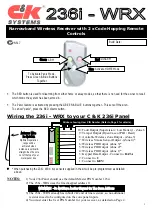
et al. 2016 and the "Machine Learning Challenge" in
2014:
http://ag1le.blogspot.de/2014/09/morse-learning-machine-challenge.html
).
So, for the moment, there seems to be no better CW decoder available than your ears
and brain working together (which is somehow appeasing and alarming at the same
time ;-)). Or your eyes and brain when using QRSS CW modulation.
Adjustments
Use a slow or very slow AGC or no AGC in your audio path. Make sure you have tuned
to the CW station properly assuring that the audio pitch of the station matches your
sidetone frequency (because the CW decoder only "hears" CW signals which are on the
pitch of your selected sidetone frequency).
CW decoder enable - ON/OFF
•
Switches the CW decoder ON or OFF. This is possible in every mode; the decoder
works on basis of the audio signal. Honestly, this is only useful, if you have a
narrow filter and a one sideband mode, e.g. 300Hz/700Hz in LSB or CW-L. Do not
combine this with RTTY demodulation mode, this will produce garbage ;-)
Signal threshold:
•
Adjust this threshold while checking the red LED until the red LED is modulated
with the rhythm of the CW signal you are listening to. This adjustment is
dependent on the signal strength of your CW station and band and antenna
noise. So, you would likely have to adjust this threshold when changing bands,
antennas, or frequency. ATTENTION: the audio signal has to match the pitch of
your CW sidetone.
Blocksize
•
in order to be able to filter out and determine the real time signal strength of the
CW impulses, we use the Goertzel algorithm. Similar to an FFT, we need a certain
no. of samples and calculate the magnitude from the sample levels. The number
of samples used for one signal magnitude value is called "Blocksize". Blocksize
can be changed from 8 to 128 in steps of 8 samples.
Noise cancel ON/OFF
•
a special noise canceling algorithm for the decoder.
















































